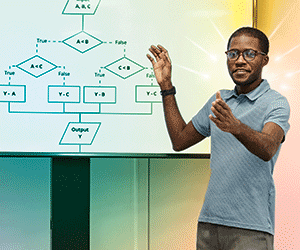Flexible Professional Development Options Reach All Educators
In today’s education environment, where many school districts are facing staff shortages, districts need to offer multiple types of sessions and ways to engage.
Though the terms are sometimes used interchangeably, there is a difference between training and professional development. Training is more akin to onboarding; it teaches users how to do something technically, like turn on a program or log in to a system. From the educator’s standpoint, PD should focus on how they can use technology to enhance the learning environment when appropriate.
Both training and professional development should be offered in person for those who want face-to-face interactions. Sessions should also be recorded and provided asynchronously for those who can’t attend in person or who wish to review the content after participating in person. Synchronous and asynchronous online options allow all educators to participate in the experience and further their careers while attending to professional and personal needs.
I started recording sessions and sharing the videos with educators prior to the height of the pandemic, when asked by a teacher in a district where I previously worked. The recordings allowed more people to participate and increased the number of educators wanting to enroll in future sessions. Emerging from emergency remote learning, districts have more technology and strategies now to continue these types of programs.
LEARN MORE: How can schools use audiovisual technology beyond remote learning?
Whether training and PD are offered online or in person, it is also important to assess how educators implement what they’ve learned; this could be through online discussions or sharing resources with others.
Focused Professional Development Is Meaningful and Efficient
In all circumstances, regardless of tenure, professional development should focus on providing the most timely and useful information for an educator’s discipline based on pedagogical best practices and relevant educational standards. This is important for new teachers and individuals in states that have altered their regulations and allowed new teachers to begin teaching while completing their credential requirements, to aid with staff shortages. School districts in these states must consider balancing requirements with these educators’ pedagogical and classroom management needs.
Districts can achieve this by working across departments, technology instruction and district leadership to plan and align professional development efforts. To balance professional and personal needs, districts should consider how many tools teachers are expected to learn, when PD will be offered, the current district climate and more. Districts engaging in this process can build a PD learning environment to enable teachers to practice and learn new skills to drive student engagement and achievement.
With experience and expertise from working with districts nationwide, CDW’s education strategists and I, along with our global network of education partners, are prepared to guide leaders to make a lasting impact without overburdening teachers’ schedules and adding one more thing to their plate.
WATCH NOW: One-man IT staff builds supports for K–12 schools from the ground up.











